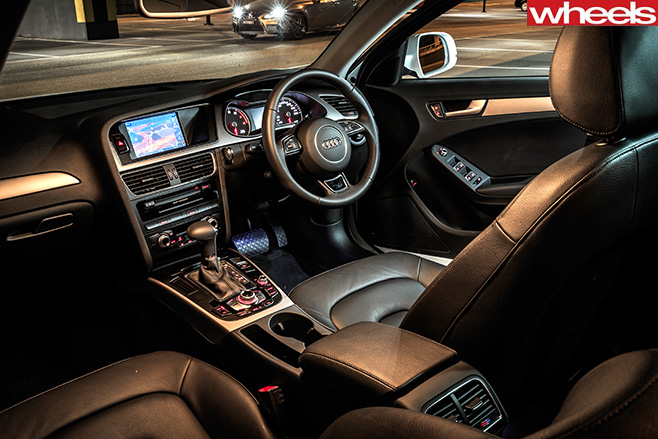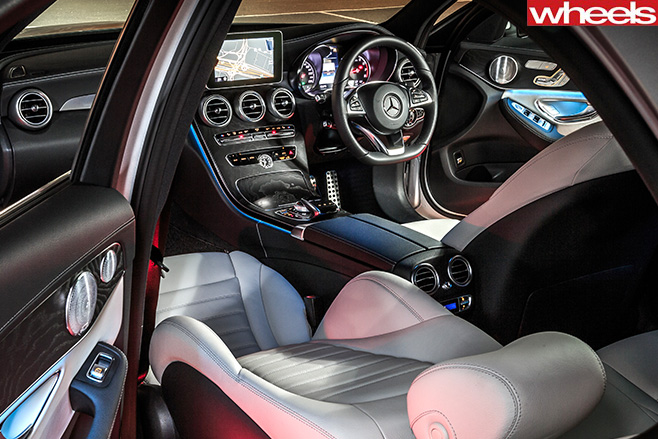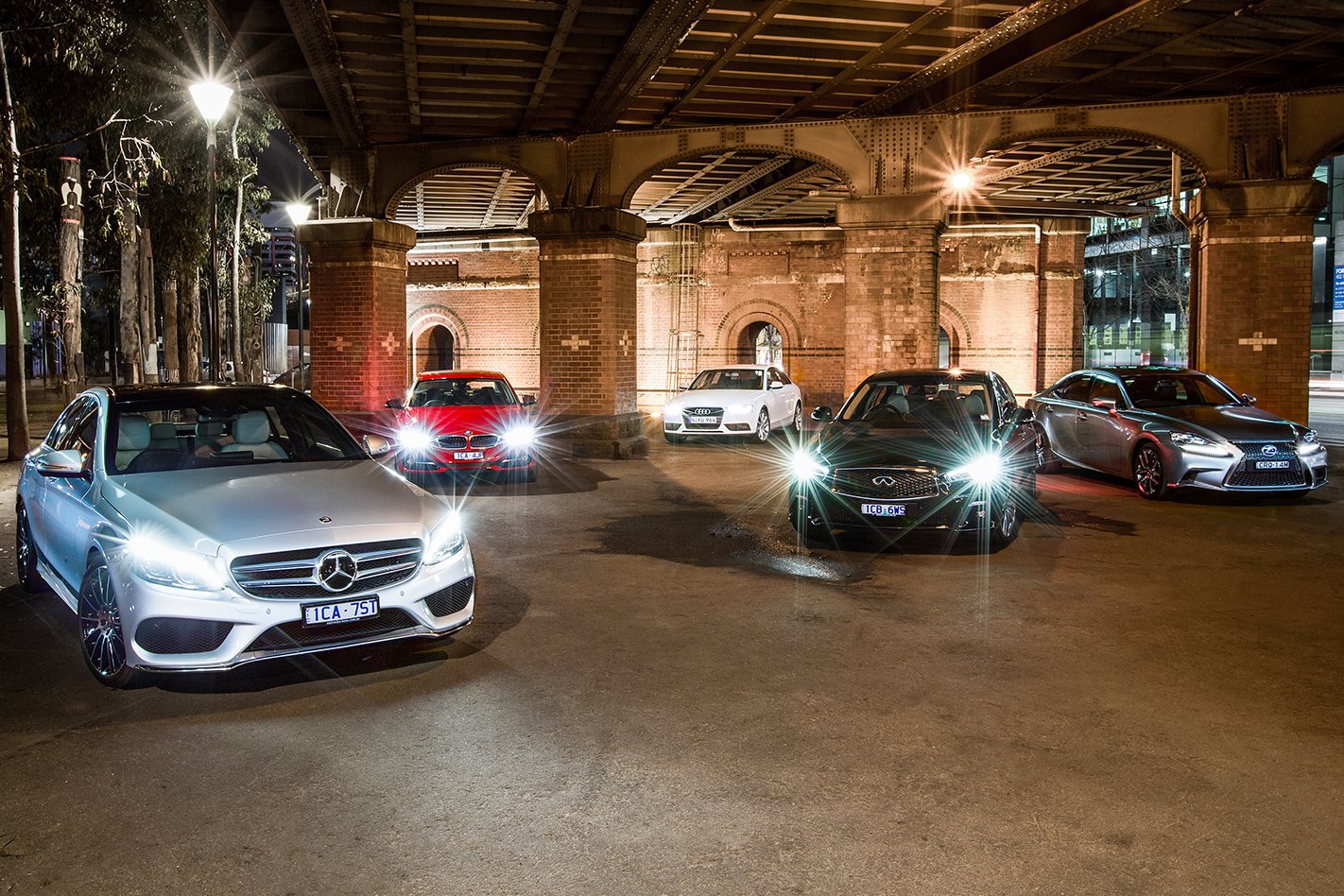Pay attention Australia: this could be the first of the ‘new’ traditional rear-wheel drive sedan stoushes for our post-Falcadore future.
First published in the December 2014 issue of Wheels magazine, Australia’s most experienced and most trusted car magazine since 1953.
Can’t wait to see the final scores? Jump to the verdict now.
WHEN the Falcon has flown and the Commodore has sailed into the sunset, will comparing the latest C-Class and 3 Series become the Holy Grail? Will Mercedes v BMW become the default shootout in the pages of Wheels, the results anticipated beforehand and debated in forensic detail afterwards?
These Benz and BMW sports sedans are already fierce rivals and their sharp, rear-wheel-drive involvement and three-box shapes connect with our automotive hearts and heritage. We understand and appreciate this stuff; it moves us in more ways than one.
Our interest in them is more than merely theoretical. On 2014 sales figures, the C-Class and 3 Series are the third- and fourth-most popular medium sedans bought in Australia, trampling over everything bar the fleet-fodder Toyota Camry and commendable Mazda 6.
Our appetite is also increasing for them and their ilk as part of a general hunger for all things prestige and luxury. That’s why there’s no shortage of direct rivals lusting after a share of the action in a segment where affordability is yet to become a distant memory and aspiration is at its height.
Which is why we’ve lined up Merc’s new W205 C250 and BMW’s two-year-old F30 328i with another long-established foe, the Audi A4 2.0 TFSI quattro. Facing off against the Germans are two recent Japanese arrivals, the Lexus IS300h F-Sport and Infiniti Q50 3.5 Hybrid S.
Five for the money
The arrival of the new C-Class is what led to this examination, and we’ve stepped up from entry-level to a place where there’s a little more creature comfort, performance and, of course, a bigger price tag.

Superficially, these cars are similar. They’re all around 4.7-4.8m long, and all offer the expected equipment – a full suite of airbags, active and passive driver aids, sat-nav, leather trim, modern media and communication tools.
But look a little harder and you’ll find the key differences that distinguish their characters.

There’s even a global production first – steer-by-wire in the Q50.
All offer some form of driver tuneability for various aspects of the mechanical package. This varies from almost none in the Audi to the comprehensive individualisation offered via Benz’s Agility Select dial (see breakout).
THE B8-series A4’s time is nearly up, yet yesterday’s car is generally pleasant, functionally earnest and very familiar. However, the front seats are flat, the vinyl backing is cheap, it has the noisiest cabin, and the lack of toeroom doesn’t help rear-seat passengers. Reflecting its age, this was the only car that came with a spare tyre, albeit a space-saver.

Not content, Benz has completely overhauled the C-Class cabin, and the drooping interior now walks a fine line between gauche and elegant.
The aged Audi sits at the other end of the scale, conventional and forgettable, while BMW has been only a little more daring. The Lexus has good bits borrowed from the LFA – including a moving instrument meter – and bad bits that confuse. The Infiniti is by turns luxurious, complex and distracting.

Bliss, in its element
This is where the BMW makes its mark. The safe exterior styling and acres of interior plastic are forgotten once you snuggle in and go. No other car here has its sheer ‘Sunday morning drive for the hell of it’ appeal. The new-generation engine responds exultantly and disposes of everything here in a straight line – other than the he-man Infiniti – with a snarl.

There’s a big ‘but’ looming, though. Our test car had the optional M adaptive suspension, which lifts ride and handling significantly above the standard passive set-up. The take-up rate among buyers has been low, but if you relish driving, tick that box. You shouldn’t have to; BMW should make M adaptive standard for this car, as it has for the 428i.
Punting the BMW along a challenging road is a real joy once you figure out the Driving Experience Control. It offers Eco Pro (freeway cruising only, please), Comfort (dampers too floaty, yet that’s the default), Sport (the best choice in our view) and Sport+, which raises the threshold of traction control intervention. Opt for Sport, flip through the lovely ZF eight-speed ’box manually and you wouldn’t want to be in any other car in this group.

To pucker, push here
Push along in the Infiniti and puckering comes as standard. At best, the Q50 is benign; at worst, it’s downright dangerous. That’s in Sport mode, which makes the steering too heavy and too quick, so you are constantly turning in too deep on corner entry, then correcting. While you’re at it, the front-end grip is only passable and the rear is dancing around on corrugations, the brakes refuse to act progressively and the Active Trace Control – which brakes individual wheels – aggressively clamps and unclamps, unsettling the car. Apparently Sebastien Vettel tuned this car. Maybe Dan Ricciardo should do the next one.

Dialling back the aggression is the only way to manage the Q50. Set the steering gearing to Casual, effort to Light, Trace Control off and Active Lane Control minimised. Even then the Q50’s cruising ability is marred by the worst ride here, especially at low speeds. Rolling on low-profile 19-inch run-flat rubber can’t help, but the Benz rides on the same set-up and is a far better effort.

Getting on, but still good
The lack of digital chassis adjustment is no impediment to the Audi. Tap the brake for a bit of weight over the nose entering the corner to keep understeer at bay, then rely on the self-locking centre diff to push and pull you up the next straight. Meanwhile, that excellent engine and snappy gearbox do their zestful thing.

City winner, country grinner
The Lexus could use the A4’s drivetrain. The IS hybrid is by far the most economical. It’s the quietest and its ride at low speeds is a class above the rest. Its EV-aided tip-in acceleration is also outstanding. Around town, this car is a winner.
The F-Sport remains interesting beyond the ’burbs, when the pace builds and corners loom. Its nicely shaped sporty exterior indicates how it drives, with a playfulness to the steering and chassis that puts a grin on your face.

Fresh take on what’s possible
The new Benz demonstrates what’s possible, upgrading from the W204’s 1.8-litre turbo-petrol four to a quieter and more powerful, torquey and economical 2.0-litre. Allied with the lighter and stronger MRA platform, the C-Class continues to be an outstanding all-round drive.
Our test C250 came fitted with optional AMG sports suspension and Airmatic air springs, the latter being a first for the category. But, while there’s no doubt they round off sharp bumps and allow a choice between floatier Comfort and tauter Sport settings, their inclusion is not a deal-breaker in the way M adaptive is for the BMW.

The C250 can’t communicate and involve like the BMW does on adaptive dampers. The engine doesn’t have the same verve, either. That margin comes into sharp focus on one challenging climb and descent section on our test loop, where a series of corrugated closing-radius off-camber turns flow into one another, a drop-off one side and a rock wall the other. The BMW settles onto its outside rear wheel and devours this stuff, delivering more confidence and demanding more commitment turning in, while driving hard and clean on the exit. There’s movement through the rear end and steering wheel, but it’s feedback, not oafishness.

But remember, the BMW crests the climb with the Benz chasing hard; the rest are still coming behind. In the case of the Infiniti, far behind.
Refinement seals the deal
The C-Class more than redresses the balance when the pace is toned down and the driving reverts to everyday stuff. Then, the quietness and calm of the cabin is exceptional. At highway cruising speeds, the engine can barely be heard; the wind rustling off the exterior mirrors is more obvious. The C250’s ride is also a step ahead of the BMW, both clearly benefitting from how far run-flat tyres have come. It’s this refinement that helps seal the deal for the C-Class.

The Benz is not only the newest but also the most complete. That’s what makes it the most convincing. It has leapfrogged the BMW, as we’re used to seeing Falcons and Commodores do to each other in Wheels shootouts. The C250 claims the ascendancy, but only establishes enough gap to motivate, not deter, the lads in Munich.

This is a dimension the Falcon v Commodore fight rarely had. It’s why 3 v C v the rest is something special, and why we’re already looking forward to the next one. You should be, too.
Power play
DRIVING the C250 sharpens our anticipation for the hot Mercedes-AMG C63. There is real dynamic ability in the new MRA architecture for the team at Sindelfingen to tap. They’ll need to if the car is to cope with its new 375kW/700Nm 4.0-litre twin-turbo V8, a wet sump version of the GT AMG donk.That’s 25kW and 50Nm up on its glorious 6.2-litre naturally aspirated predecessor, and well ahead of the brilliant new M3/M4’s 317kW/555Nm twin-turbo six. The sedan and wagon, unveiled at the Paris show, go on sale in Australia around March. A coupe and maybe a convertible will follow in 2016.
Join the pack
JUST as they target the mainstream C and 3, so the challengers are after a share of the high-performance market. Infiniti is weighing up whether to build its Q50 Eau Rouge, powered by a 418kW version of the Nissan GT-R’s twin-turbo V6 engine. Next year’s B9 Audi A4 will spawn an RS4 tipped to trade the atmo V8 for a return to a twin-turbo V6. A second-generation Lexus IS F using the naturally aspirated 5.0-litre V8 from the RC F is being considered. And then there’s the Jaguar XE SVR, developed by its Special Vehicle Operations. A huffed 5.0-litre V8 is likely.
Wiretapped
THE Infiniti Q50’s steer-by-wire Direct Adaptive Steering works by electronically transferring the driver’s input to the front wheels, where a high-response actuator drives the steering rack. Steering is adjusted via a touchscreen, with up to four pre-set modes and a personal setting that allows the driver to mix and match effort and response. The system comes with a triple-mode back-up (three separate electronic control units), 400,000km of real-world testing and the fail-safe fallback of a mechanical steering linkage.
Make a move
REMEMBER when dialling up the fun was just a matter of switching off the stability control? The new Benz’s Agility Select system adjusts the drivetrain through Eco, Comfort, Sport and Sport+ modes, while the steering has Comfort and Sport modes. Infiniti’s Drive Mode, BMW’s Driving Experience Controller and the Lexus Drive Mode Selector all do similar things, although the F Sport adds adaptive dampers.
The old-school A4 gearbox just has Drive, Sport and Manual modes.
Verdict
 MERCEDES-BENZ C250
MERCEDES-BENZ C250
Price as tested: $82,899 *Includes metallic paint ($1531), Comand package ($2300), Vision package ($3454), AMG Line package ($2685), Airmatic suspension ($1915), Air-Balance ($377)
NCAP rating: 5 stars (Euro)
Fuel economy: 11.3L/100km (test average)
Acceleration: 0-100km/h: 6.7sec (tested)
Plus: Interior quality; ride and handling balance; class-leading safety
Minus: Underdone rear seat; can’t match BMW’s driving thrills
Verdict: 8.5/10

BMW 328i HIGH-LINE SPORT
Price as tested: $77,520 *Includes metallic paint ($1800), adaptive M suspension ($2200), glass sunroof ($2920), Sport Line (no cost), ConnectedDrive Freedom ($1200)
NCAP rating: 5 stars (Euro)
Fuel economy: 11.5L/100km (test average)
Acceleration: 0-100km/h: 5.8sec (tested)
Plus: Excellent performance; decent refinement; great driver’s car…
Minus: …but only if you option adaptive dampers; underwhelming interior
Verdict: 8.0/10

LEXUS IS300h F-SPORT
Price as tested: $74,200 *Includes Enhancement Pack 1 ($4000), Premium Paint ($1500)
NCAP rating: 5 stars (Euro)
Fuel economy: 9.2L/100km (test average)
Acceleration: 0-100km/h: 8.5sec (tested)
Plus: Quiet; refined; economical; nicely finished; doesn’t mind a punt
Minus: Lacks the grunt to complement its chassis; deserves a turbo-petrol
Verdict: 7.5/10

AUDI A4 2.0 TFSI QUATTRO
Price as tested: $59,900
NCAP rating: 5 stars (Euro)
Fuel economy: 11.7L/100km (test average)
Acceleration: 0-100km/h: 6.1sec (tested)
Plus: Snappy drivetrain; surprisingly good dynamics; impressive finish
Minus: Noisy; interior now ageing; unsupportive front seats
Verdict: 7.0/10

INFINITI Q50 3.5h S
Price as tested: $67,900
NCAP rating: 5 stars (Euro)
Fuel economy: 11.4L/100km (test average)
Acceleration: 0-100km/h: 5.4sec (tested)
Plus: Big straight-line performer; lots of gear for the money; lush back seat
Minus: Steer-by-wire needs work; total dynamic package not good enough
Verdict: 5.0/10





